Test Building
Introduction
Text-to-speech Audio
Images
The Test building still manages to hide the fact that it was once one of the largest parking garages in the country when it was completed in 1925.
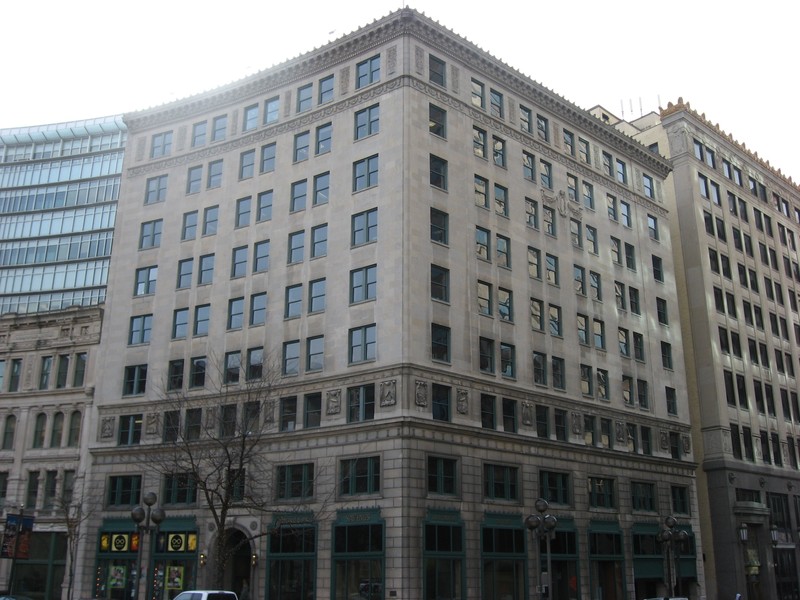
The Test Building (on the left) was designed to blend in with the surrounding buildings, such as the English Theater and Opera House that once stood along Monument Circle.
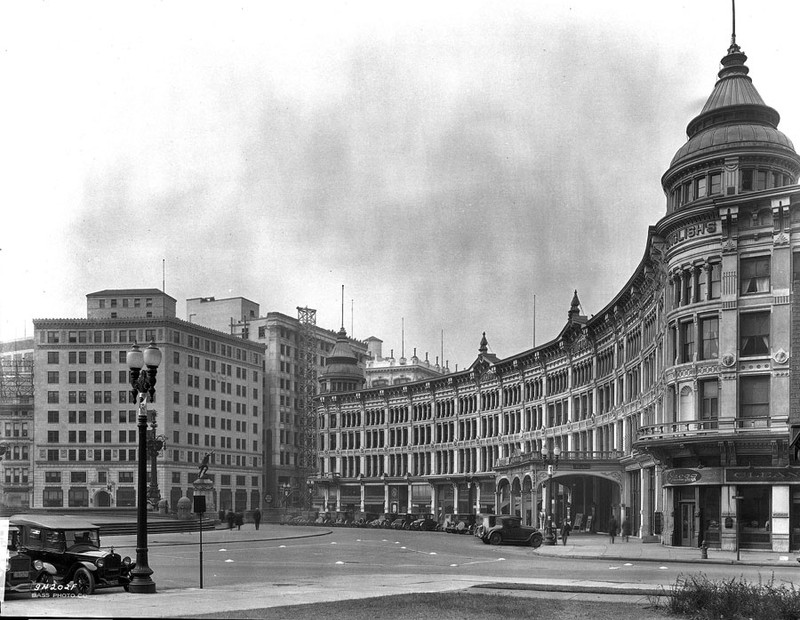
The Test Building's arched entryway along Monument Circle prominently features its alternative name, "Lacy."
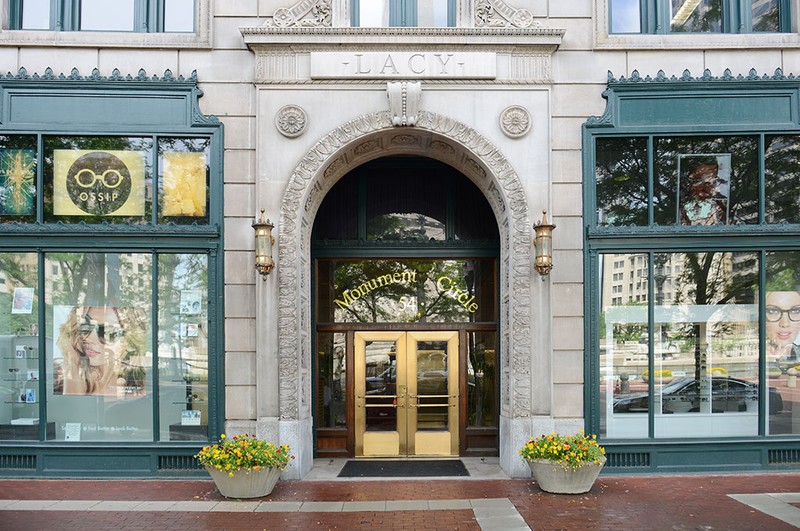
A close-up of one of Alexander Sangernebo's bas-relief sculptures, in this case a biplane.
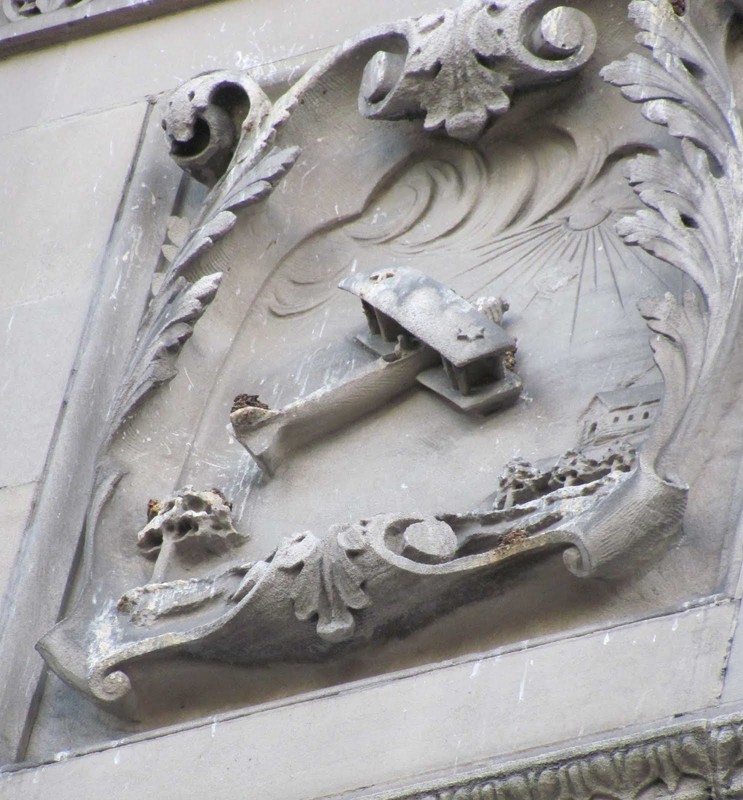
The marble-clad main lobby of the Test Building.
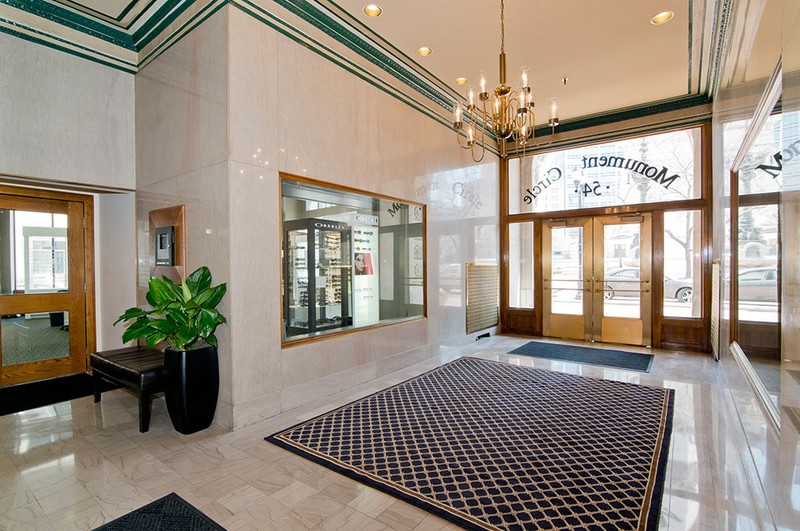
Backstory and Context
Text-to-speech Audio
In 1923, the Test family first put forth their idea for a parking structure along Monument Circle and Market Street. The city, which had already issued a building permit for a structure, quickly revoked it upon hearing of the building’s intended use. The city feared traffic congestion around the garage and the threat automobiles posed to pedestrians. They also felt the garage would be an eyesore within the larger Monument Circle area. The case went to court and the permit was reissued in June of 1924 when the Test family assured the city that the building would meet all their structural and architectural demands.
The Test family then hired the firm of Bass, Knowlton and Company to design a structure in which form and function were of equal value. The nine-story building was designed to be analogous to a Corinthian columnn with an unadorned middle sandwiched between an ornate base and capital or crown. To that end, the middle five floors are relatively plain while the lower three floors are capped by a series of bas-relief sculptures that depict different landmarks and modes of transportation, such as a domed government building, a biplane and a dirigible. These were created by well-known local artist, Alexander Sangernebo. The Test Building is topped by ornate scrollwork just below the ninth floor and a carved cornice above.
Within the building, the architects utilized a d’Humy Motoramp System that was first used in a sturcture in Poughkeepsie, New York. To use this system, the floors do not meet in the middle. They actually alternate like steps. This permitted the auto ramps to be half the normal length in between floors which opened up more of the building for alternative uses. The garage’s capacity was also increased with the addition of two basement parking levels. This brought its capacity up to about 200 automobiles, which, even 20 years after it was completed, still represented over two-thirds of all parking spaces within the downtown area.
The garage was initially run by the Circle Motor Inn and its earliest occupants included the United States Veteran’s Bureau and the International News Services, a news wire service. The Test Building, also now known as the Lacy Building, still houses retail shops at ground level and office space on floors three through nine as well as a working parking garage, albeit on a much smaller scale.
Sources
Gadski, Mary Ellen and James Reed. "National Register of Historic Places -- Nomination Form." United States Department of the Interior/National Park Service. February, 1983. Accessed February 24, 2017. https://secure.in.gov/apps/dnr/shaard/r/1f1fc/N/Test_Bldg_Marion_CO_Nom.pdf
"Test Building." National Park Service. Accessed February 24, 2017. https://www.nps.gov/nr/travel/indianapolis/testbuilding.htm
Parkes, G. "Test Building -- Indianapolis, Indiana." Waymarking. September 18, 2009. Accessed February 24, 2017. http://www.waymarking.com/waymarks/WM78DW_Test_Building_Indianapolis_Indiana
